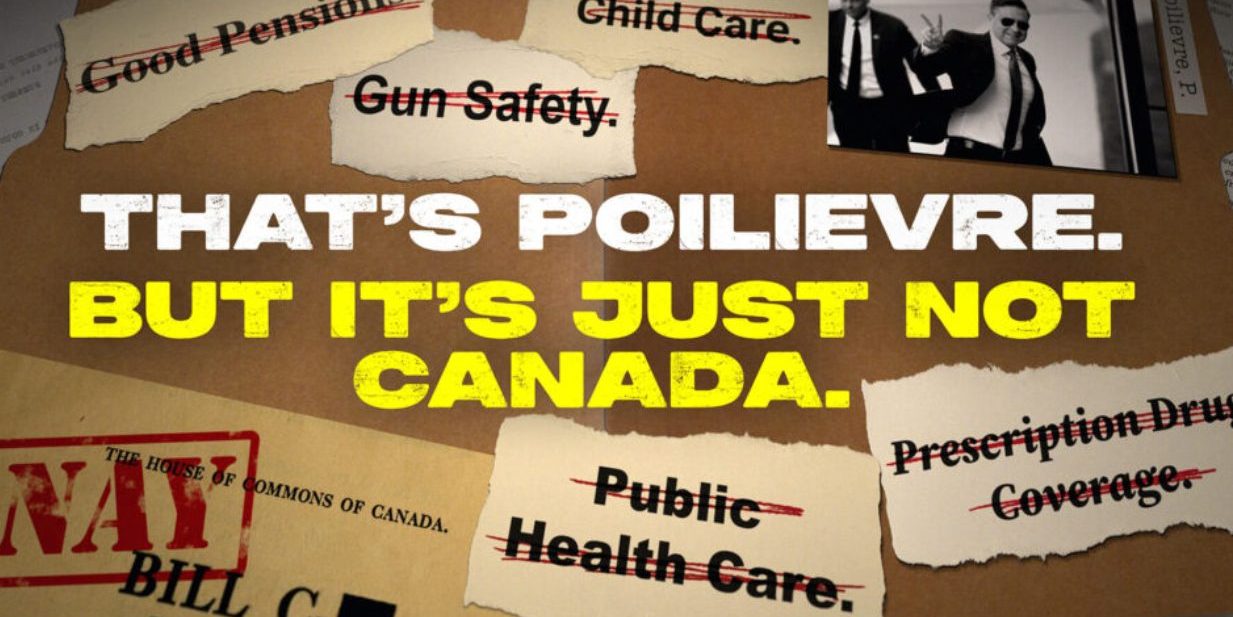Major third parties wind down ads in writ period, but organic ‘authenticity’ better than polished spots, say strategists

While federal parties continue to splash out on Facebook and Instagram ads during the election campaign, it’s “a whole different world” for outside third parties who have begun tightening their purse strings or gone quiet altogether, digital advertising strategists say.
Cole Hogan, a Conservative digital ad strategist and principal at GT, told The Hill Times that given the restrictive spending limits, he expects many third-party big spenders before the election won’t even bother with the complicated registration process.
“It’s a different world now that they have to register and clock all of their spending,” Hogan explained, adding that the registration process tends to be far more of a “pain in the ass” than it’s worth.
“Cumulatively, you end up being a bit hamstrung as an advertiser,” Hogan said, noting that many of the groups that had been spending large sums on Meta advertising—like the left-wing Protecting Canada, right-wing Canada Proud, and special interest groups like the Canadian Taxpayers Federation—all stopped spending the day the election began, and none has yet registered with Elections Canada.

Under the Canada Elections Act, third parties—defined as a person or group wanting to participate in or influence elections other than a political party, electoral district association, nomination contestant, or candidate—must register with Elections Canada once their expenses for regulated activities exceed $500 during the writ-period or pre-writ period during fixed-date elections, including partisan activities like fundraising, advertising, and voter surveys.
According to Election Canada’s online registry, 56 third parties have registered for the 45th general election, compared to 105 that had registered during the previous campaign in 2021.
While spending limits for candidates and political parties are determined by the number of electors within a specific riding multiplied by the number of candidates a party has endorsed, third-party spending is capped at a far lower level.
According to Elections Canada’s estimates released on Nov. 15, 2024, third parties are limited to spending $5,166 per riding, and have an overall limit of $602,700. In comparison, a federal party that has endorsed a candidate in all 343 ridings would be eligible to spend a maximum of $35.2-million. Based on the same combined riding limit total, a third party would hypothetically be able to spend well over $1.7-million this election.
In the past 90 days, Canada Proud, Protecting Canada, and the Canadian Taxpayers Federation spent a combined $841,000, according to Meta’s Ad Library.
In comparison, the 28 organizations registered as third parties found in the Meta library have spent just over $1.2-million. The biggest spender is the Public Service Alliance of Canada (PSAC), which has racked up more than $690,000 in ads. It’s followed by the pro-energy Canada Strong and Proud—or “Proud to Be Canadian” in the library—with over $223,900, and the Friends of Canadian Media—responsible for the “Fu**(nd) the CBC” ads—with $59,000 spent.
In the final week before the election was called, March 16-22, Canada Proud spent more than $110,000, while Protecting Canada and the Canadian Taxpayers Federation spent just over $14,000. All three have stopped their paid advertisements since March 23, while PSAC has continued its spending in the the first week of the campaign, with $26,273, followed by Greenpeace Canada with $14,453, and the Canadian Federation of Nurses Unions with $12,572 in ad spending.
Protecting Canada, which had claimed it would try to match Conservative ad spending dollar for dollar, had ramped up its spending on Meta to more than $100,000 monthly after a brief hiatus in late fall.
At the end of January, the group also returned with a $4-million television advertising blitz focused on Conservative Leader Pierre Poilievre’s pension, which ran on major national and regional networks, timed to coincide with “high-profile TV moments,” such as the inauguration of United States President Donald Trump, the Grammy Awards, Saturday Night Live’s 50th anniversary special, and various NHL games.



Prior to the television campaign, Protecting Canada also released a multi-part YouTube documentary, The Poilievre Investigations, which examined “Poilievre’s values, policies, and who he associates with … support for far-right groups, his voting record against measures to support Canadians, and his cozy ties to the rich and powerful.”
While the group had been sending out regular press releases to highlight their campaign and had previously participated in interviews, those emails have gone silent and the group has not responded to multiple calls or emails by publication deadline.

Jeff Ballingall, Canada Proud’s founder and president of Mobilize Media Group, confirmed his group would neither spend money on Meta advertising during the election, nor did it plan to register as a third-party.
While Meta’s Ad Library logs a $4,000 spend for the election campaign’s first week, its records also indicate all of Canada Proud’s advertisements were deactivated on March 23, and is therefore not regulated spending.
However, even without the paid ads, Canada Proud’s content is still reaching millions of Canadians.
On March 31, The Logic reported that Canada Proud’s Facebook page with 593,000 followers had been responsible for 31 of the top 50 most-viewed posts mentioning Liberal Leader Mark Carney in the first seven days of the election, garnering more than 1.58-million views.
While the Conservatives won’t be able to count on Canada Proud’s paid advertising to boost its messaging or to attack Carney, the party shouldn’t underestimate the effectiveness of the authenticity provided by organic engagement, Ballingall advised.
“Take lessons from what worked in the last presidential campaign in the United States and bring it here,” Ballingall said, adding the Tories should resist the urge to focus on only political programs, noting the success former presidential candidate Kamala Harris had on the Call Her Daddy podcast, or U.S. President Donald Trump’s conversation with comedian Theo Von.

However, those campaigns must also stick to organic messaging on both YouTube and Google, as the tech giant banned Canadian political messaging on its platforms ahead of the 2019 election in the wake of transparency rules required by the Liberals’ Bill C-76, which required online platforms to keep a registry of all political and partisan ads they directly or indirectly publish.
Harneet Singh, a managing principal at EOK Consults, told The Hill Times that while the biggest spenders have tightened their purses, the groundwork that was laid before the writ and the activities of the registered third parties during the election will play a significant role in shaping the narrative.
“As more people believe less and less in the mainstream media to get their information, these groups spending even half of what they were will shape the opinion of the public on a lot of issues,” Singh explained. “They’re filling the gap because when people don’t trust the media, they’ll find alternatives.”
Singh said he agreed with Ballingall’s assessment, noting that the most successful messages from any party will be the ones that can be delivered directly and “authentically,” rather than in a polished television ad or rally speech.
“People are disconnected from the usual political discourse, and they’re tired of the repeat messages and slogans,” Singh explained. “Any parties that can use those digital platforms and be authentic will have the upper hand.”
From March 23 to 29, the six main federal parties spent a combined $1.3-million on Meta ads, with the Conservatives boosting their daily spends to more than $100,000 since March 25.
The Grits have also consistently spent between $80,000 and $100,000 over this period, for a total of $676,647, followed by the Conservatives’ total of $623,985, and the New Democrats’ $13,458 purchase. The Green Party spent $8,627, while the Bloc Québécois has spent more than $9,000 focused solely on audiences in its home province.
sbenson@hilltimes.com
The Hill Times






 LICENSING
LICENSING PODCAST
PODCAST ALERTS
ALERTS













